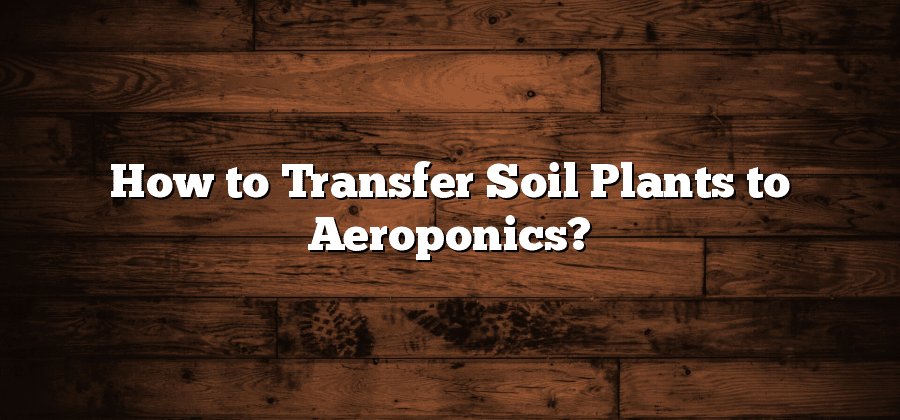Understanding the Benefits of Aeroponics
Aeroponics, an innovative method of growing plants without the use of soil, has gained considerable attention in recent years. This cutting-edge technique utilizes a misting system to deliver nutrients and water directly to the plant roots, resulting in faster growth, higher yields, and overall healthier plants. Unlike traditional soil-based methods, aeroponics provides plants with increased access to oxygen, promoting stronger root development and nutrient absorption. Additionally, the controlled environment of aeroponic systems minimizes the risk of pests and diseases, reducing the need for harmful pesticides and herbicides. These unique benefits make aeroponics a promising solution for maximizing crop production while minimizing environmental impact.
Moreover, the versatility of aeroponics plays a significant role in its increasing popularity. This technique can be adopted for growing a wide variety of plants, including vegetables, herbs, and even flowers. The precise control over environmental conditions allows for optimal growth in any season, making it possible to cultivate plants year-round. Aeroponics also allows for the efficient use of space, making it ideal for urban gardening or areas with limited land availability. The ability to vertically stack plants in an aeroponic system maximizes the use of vertical space, allowing for higher plant density and increased production. These advantages make aeroponics a compelling option for those looking to optimize their gardening or farming efforts.
Selecting the Ideal Plants for Aeroponics Transfer
When it comes to selecting the ideal plants for aeroponics transfer, there are several factors to consider. First and foremost, you’ll need to think about the type of plants that thrive in a soilless environment. While many plants can be grown using aeroponics, some are better suited for this method than others. Leafy greens such as lettuce, spinach, and kale are often a popular choice for aeroponics due to their quick growth and ability to absorb nutrients efficiently. Other plants that can do well in an aeroponic system include herbs like basil, cilantro, and parsley, as well as certain varieties of tomatoes, peppers, and cucumbers.
In addition to considering the suitability of plants for aeroponics, it’s important to think about the available space and resources for your chosen plants. Different plants have varying space requirements, so it’s essential to ensure that your aeroponic system can accommodate their growth. Additionally, consider the amount of light, water, and nutrients each plant will need. Some plants may require more intense lighting, while others may have specific nutrient requirements. By thoroughly researching and selecting the ideal plants for your aeroponics transfer, you can set yourself up for a successful and thriving soilless garden.
Preparing the Soil Plants for Aeroponics Conversion
One crucial step in transitioning soil plants to aeroponics is properly preparing the plants for the conversion process. This involves careful consideration and planning to ensure a smooth and successful transfer.
Firstly, it is essential to inspect the soil plants for any signs of diseases or pests. If detected, immediate treatment should be administered to prevent any potential complications in the aeroponic system. It is also imperative to remove any weeds or unwanted plants from the soil, as they can compete for nutrients and space in the new environment. Additionally, trimming any excessive foliage or roots can promote healthy growth in the aeroponic system. By diligently preparing the soil plants, you lay the foundation for a successful transfer to aeroponics, setting your plants up for optimal growth and productivity.
Choosing the Right Aeroponic System for Transfer
When it comes to choosing the right aeroponic system for transferring your soil plants, there are several factors to consider. One important aspect is the size of the system. You need to determine how many plants you plan to transfer and ensure that the aeroponic system can accommodate them comfortably. The system should also provide enough space for the plants to grow and expand their root systems. Additionally, consider the overall design of the system. Look for features such as adjustable nozzles and misters that allow you to customize the watering and nutrient delivery to suit the specific needs of your plants.
Another key consideration is the type of aeroponic system you want to use. There are various options available, including low-pressure systems and high-pressure systems. Low-pressure systems are more suitable for small-scale indoor gardening, while high-pressure systems are preferred for larger-scale commercial operations. It’s important to research and assess the pros and cons of each system before making a decision. Additionally, take into account the complexity of the system and your level of experience or expertise in aeroponic gardening. Opt for a system that matches your skill level and allows for ease of maintenance and troubleshooting.
Transferring Soil Plants to Aeroponics: Step-by-Step Process
The process of transferring soil plants to aeroponics involves several steps that must be followed carefully for successful conversion. First, it is crucial to select the plants that are most suitable for aeroponic transfer. Not all plants thrive in aeroponic systems, so it is important to choose plants that have a higher likelihood of adapting to and thriving in this environment. Researching and selecting plants that have a shallow root system and are known to grow well in nutrient-rich solutions will increase the chances of success in the transfer process.
Once the ideal plants have been selected, it is important to prepare the soil plants for aeroponics conversion. This involves gently removing the plants from the soil, taking care not to damage the roots. The soil should be gently shaken off, and the roots should be rinsed with water to remove any remaining soil particles. This step is crucial as it allows the plants to adapt to their new environment more easily and ensures that they can properly absorb the nutrients from the aeroponic solution. Once the plants are free from soil, they are ready to be transferred to the aeroponic system, which will be covered in the next step-by-step guide.






